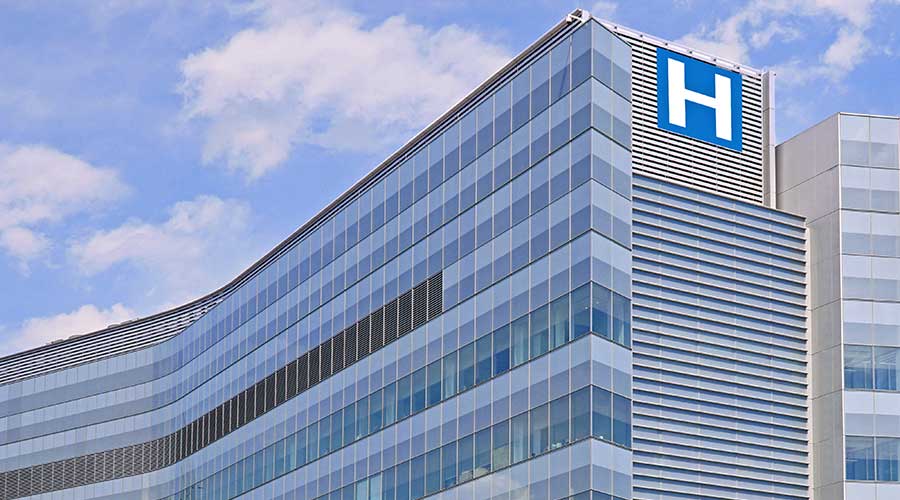More people are flocking to major-metropolitan areas, but with that movement comes the increased need for hospitals and other healthcare facilities. Major cities are now faced with the challenge of having limited spaces available for new buildings. Because of this challenge, designers are renovating current facilities instead, trying to avoid slow erosion and improve connectivity to the surrounding neighborhood.
By updating existing healthcare facilities, designers are helping improve the quality of life within communities. Healthcare Facilities Today spoke with Beau Herr, principal for healthcare with CRTKL on ways designers are blurring the lines between designing healthcare facilities and urban areas.
HFT: In what ways will healthcare facilities remain competitive with their renovations and new construction?
Beau Herr: In the midst of global challenges, a rise in health sciences, a focus on digital transformation and advancements in personalized medicine are changing the face of healthcare. Health systems must remain competitive by looking for new ways to deliver care, treat patients and leverage emerging therapies and technologies to aid in the care of the world's most vulnerable.
It is always difficult to plan, let alone build, for something that is unknown. At times, we impair our facilities by building flexible space for the future. Inevitability, the flexibility will be ill-conceived for the unknown. Consideration should also be given to the inefficiencies that result from preparing for the unknown. Design should anticipate expansion through new construction or repurposing through renovation, and this should be a necessary part of any designer’s basic service.
HFT: How can future-proofing workspaces improve the surrounding community?
Herr: As architects and designers create future healthcare facilities, it is important for our healthcare systems to be proactive, not reactive. If facilities are prepared for future crises, there will be no need for panic-induced reactive preparation. Future-proofing workspaces will improve the surrounding community by proactively preparing for disasters ahead of time. The fundamental question is, How do we gather the information necessary to see and make ready for the potential hazard that is about to hit?
This does not mean that we need to stockpile and prepare for any and all potential disasters. Stockpiling for future possibilities is not only inefficient, but as shown during the pandemic's peak, it is largely ineffective. Stockpiles of ventilators once needed were either defective due to poor maintenance, or they were technologically out of date. The better solution is to engage the industry in a broader plan to provide production of any needed item on a just-in-time basis.
For example, conducting wastewater surveillance in untreated wastewater over time. By measuring the levels of pathogens in wastewater, like SARS-CoV-2, it is possible to see the number of infections increasing or decreasing. Clearly, monitoring wastewater will help public health officials monitor issues as they develop in specific locations, predict the likely outcomes of these issues and implement plans and solutions before the consequences overwhelm the ability to effectively control the outcomes. This advanced information will prompt the healthcare systems to enact measures to mitigate the effects by proactively preparing. Moving forward, the healthcare facilities as a coherent system must move from reactive to proactive to better predict and prepare communities for future pandemics and health crises.
HFT: Why do you think design will play such an important role in the well-being of healthcare workers and community members? How do current designs impact workers now?
Herr: In a post-pandemic world, design will continue to play an important role in the wellbeing of healthcare workers and community members. Healthcare facilities need to be outward facing in their goal to provide a high-quality of life and a healthy environment in their communities. For some facilities, this may mean an investment in physical activity with new pathways for active transportation, such as walking and biking. For other facilities, design investments will help provide safe, attractive and dignified housing in their neighborhoods for those in most need and for their own staff.
Today, healthcare facilities are struggling to maintain adequate staff for many reasons, but one of particular note is the provision of housing choices in close proximity. Dated designs, such as windowless breakrooms for staff members and a lack of attention to people-first design will result in a stressful environment. Patients and other service users feel more comfortable in their own surroundings when they enter a building that fits well in the surrounding community and promotes wellness.
Mackenna Moralez is the associate editor for the facilities market.

 Grounding Healthcare Spaces in Hospitality Principles
Grounding Healthcare Spaces in Hospitality Principles UC Davis Health Selects Rudolph and Sletten for Central Utility Plant Expansion
UC Davis Health Selects Rudolph and Sletten for Central Utility Plant Expansion Cape Cod Healthcare Opens Upper 2 Floors of Edwin Barbey Patient Care Pavilion
Cape Cod Healthcare Opens Upper 2 Floors of Edwin Barbey Patient Care Pavilion Building Sustainable Healthcare for an Aging Population
Building Sustainable Healthcare for an Aging Population Froedtert ThedaCare Announces Opening of ThedaCare Medical Center-Oshkosh
Froedtert ThedaCare Announces Opening of ThedaCare Medical Center-Oshkosh